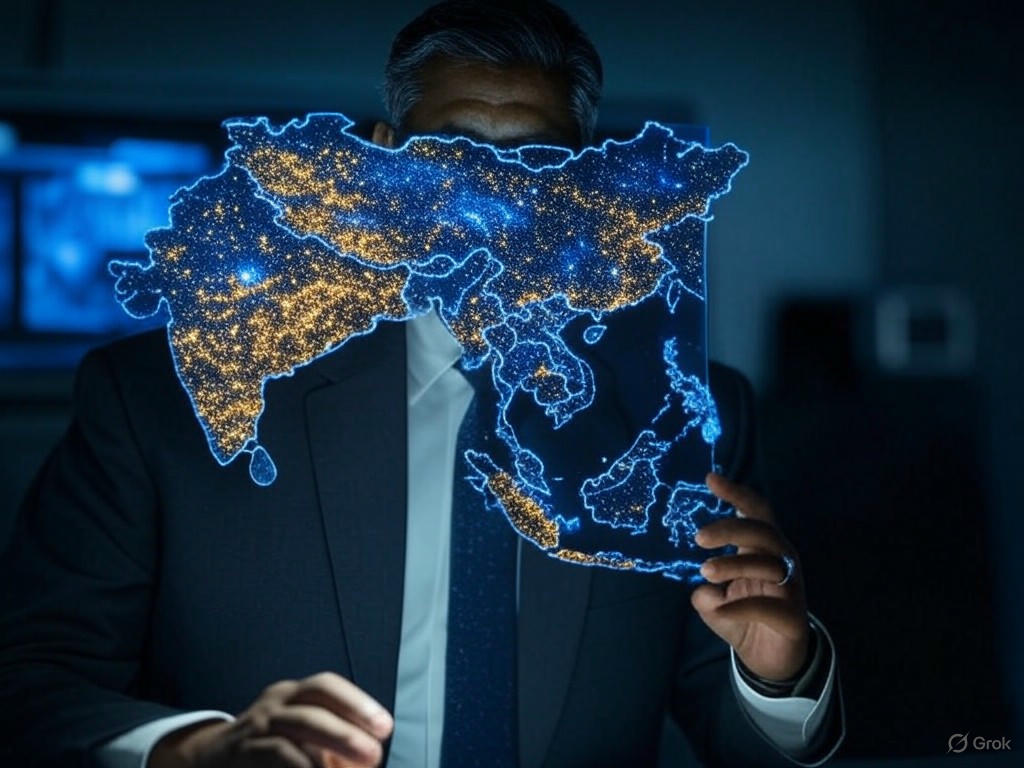
India’s Post-Strike Diplomatic Offensive: Fresh Moves
India’s Swift Diplomatic Strategy in the Aftermath of Operation Sindoor
India’s diplomatic strategy following Operation Sindoor unfolded with impressive speed, turning a military response into a global conversation. Just hours after the strikes on May 7, 2025, aimed at terrorist camps in Pakistan and Pakistan-occupied Kashmir, Indian officials mobilized to shape the narrative. Have you ever wondered how a single operation can shift international perceptions? In this case, it highlighted India’s commitment to precision and diplomacy, preventing misinformation from taking root.
The strikes were a direct retaliation to the devastating April 22 attack in Pahalgam, which killed 26 Hindu tourists. By reaching out to world leaders immediately, India ensured its actions were seen as defensive, not aggressive. This proactive move in India’s diplomatic strategy following Operation Sindoor set a new benchmark for crisis management.
Understanding Operation Sindoor: A Calculated Military Response
Operation Sindoor represented a finely tuned effort by the Indian Armed Forces to dismantle terrorist infrastructure without sparking wider conflict. Targets were limited to nine sites linked to the Pahalgam attack, sparing civilian and military areas entirely. What if such precision wasn’t prioritized? It could have escalated tensions between two nuclear-armed neighbors, making India’s diplomatic strategy following Operation Sindoor even more crucial for de-escalation.
The operation stemmed from intelligence tying the Resistance Front and Lashkar-e-Taiba to the attack, groups India has long accused of Pakistani support. Pakistani reports claimed 26 deaths and 46 injuries, but Indian accounts emphasized the non-escalatory nature of the strikes. This careful balance showcased how military actions can align with broader diplomatic goals, reinforcing India’s resolve against terrorism.
Key Principles Behind the Precision Targeting
Indian planners focused on three core elements: hitting only terrorist sites, avoiding non-combatant areas, and keeping the operation contained.
- Precise targeting ensured minimal collateral damage, a smart move in today’s watchful world.
- Avoiding civilian zones demonstrated restraint, which later bolstered India’s diplomatic efforts.
- Limited scope helped prevent a chain reaction, allowing diplomats to steer the conversation toward peace.
This approach not only addressed immediate threats but also fed into India’s overarching diplomatic strategy following Operation Sindoor, proving that military and diplomatic tools can work hand in hand.
Shaping the Global Narrative Through Diplomatic Outreach
Within an hour of the strikes, India’s diplomatic machine kicked into high gear, a testament to its refined strategy post-Operation Sindoor. Officials contacted key allies to explain the operation’s intent, countering potential spin before it spread. Ever thought about how timing can make or break a country’s image? Here, it was a game-changer, with statements issued from the Washington embassy to reach U.S. audiences first.
This wasn’t just reactive; it was a deliberate evolution in India’s diplomatic strategy following Operation Sindoor, moving away from past practices. By emphasizing the focus on terrorist infrastructure, India positioned itself as a responsible actor on the world stage.
Highlights of High-Level Engagement
Key interactions included National Security Advisor Ajit Doval’s call to U.S. Secretary of State Marco Rubio, alongside briefings to leaders in the UK, Russia, Saudi Arabia, and the UAE.
- Doval’s discussions underscored India’s readiness to respond if provoked, blending firmness with restraint.
- Diplomatic missions in Pakistan and India worked overtime to clarify facts.
- These steps ensured a unified message, strengthening India’s diplomatic strategy following Operation Sindoor.
If you’re interested in global affairs, this level of coordination offers a blueprint for effective international relations.
Countering Pakistan’s Attempts to Shift the Narrative
Pakistan’s quick labeling of the strikes as “an act of war” was predictable, but India’s diplomatic strategy following Operation Sindoor anticipated and neutralized it. Prime Minister Shehbaz Sharif’s statements on social media tried to paint Pakistan as the victim, but Indian diplomats were already sharing evidence of the targeted strikes. How do you combat misinformation in real time? India’s approach showed that swift, evidence-backed communication is key.
Addressing Pakistan’s Misleading Claims
Pakistani officials alleged civilian casualties and threats to air traffic, framing the operation as unprovoked.
- India countered with detailed briefings, proving the strikes were surgical and justified.
- This pushback prevented false narratives from gaining traction internationally.
- By varying its diplomatic strategy following Operation Sindoor, India turned defense into a proactive stance.
In a world of instant news, this kind of response can make all the difference, offering lessons for anyone navigating conflicts.
Global Reactions and the Path to Restraint
The international community called for calm, with U.S. President Donald Trump labeling the situation “a shame” and urging quick resolution. China’s expressions of regret underscored the risks, yet India’s diplomatic strategy following Operation Sindoor helped keep the focus on terrorism rather than escalation. What might happen if diplomacy fails? It’s a sobering thought, but India’s efforts have so far promoted dialogue.
At home, an all-party meeting in India fostered unity, ensuring a cohesive front abroad. This inclusive tactic is a practical tip for governments facing crises: involve stakeholders to strengthen your position. Meanwhile, the UN’s calls for restraint echoed the need for measured responses, aligning with India’s goals.
How Alliances Influence Outcomes
From Beijing’s cautious stance to Western appeals, global powers are watching closely.
- India’s early outreach secured support, preventing isolation.
- A hypothetical scenario: Without this, Pakistan might have rallied more allies.
- This element of India’s diplomatic strategy following Operation Sindoor highlights the value of relationships.
For readers interested in geopolitics, building strong networks could be your takeaway strategy.
The Backdrop of India-Pakistan Tensions
India-Pakistan relations have been strained for decades, with Kashmir at the heart of the discord since 1947. Operation Sindoor isn’t an isolated event; it’s part of a pattern of accusations and denials. India’s diplomatic strategy following Operation Sindoor builds on this history, aiming to address security without reigniting old wars. Imagine the pressure of managing such a legacy—it’s a real challenge for any leader.
Multiple conflicts have shaped this rivalry, but India’s recent moves show a shift toward smarter, less confrontational responses. If you’re studying international relations, this could inspire your own approaches to conflict resolution.
Looking Ahead: Risks and Opportunities for Escalation
Pakistan’s vague threats of retaliation keep the situation tense, but India’s diplomatic strategy following Operation Sindoor emphasizes readiness without provocation. Ajit Doval’s warnings signal a balanced response, potentially deterring further aggression. What steps could prevent a full-blown crisis? Open channels and international mediation might be the answer, as they’ve been in past standoffs.
This strategy not only deters escalation but also positions India as a stabilizing force. For anyone in policy or advocacy, it’s a reminder that preparation and dialogue can turn threats into opportunities for peace.
Why India’s Diplomatic Approach Matters in Modern Conflicts
In wrapping up, India’s diplomatic strategy following Operation Sindoor illustrates how countries can blend force with finesse. By controlling the narrative early, India avoided missteps and gained global empathy. This evolution in crisis handling is a masterclass in adaptability, showing that diplomacy isn’t just talk—it’s a powerful tool.
As tensions linger, one thing is clear: proactive engagement can lead to better outcomes. What are your thoughts on this? Share in the comments, explore more on our site, or spread the word to spark discussion.
References
- “Tensions Rise After India Strikes Terrorist Infrastructure in Pakistan.” El País, URL, Accessed May 2025.
- “India Reaches Out to Top Global Leaders to Set the Narrative Post-Operation Sindoor.” India Today, URL, May 7, 2025.
- Video: “India’s Response to Pakistan.” YouTube, URL, May 2025.
- “India Warns of Retaliation if Pakistan Escalates.” Onmanorama, URL, May 7, 2025.
- General SEO Guidance from HubSpot Blog, URL, for reference.
- SEO Article Writing Tips from Moss51, URL.
- “Government to Brief Leaders at All-Party Meeting.” Times of India, URL, May 7, 2025.
- Additional Video Resource: YouTube, URL, May 2025.







